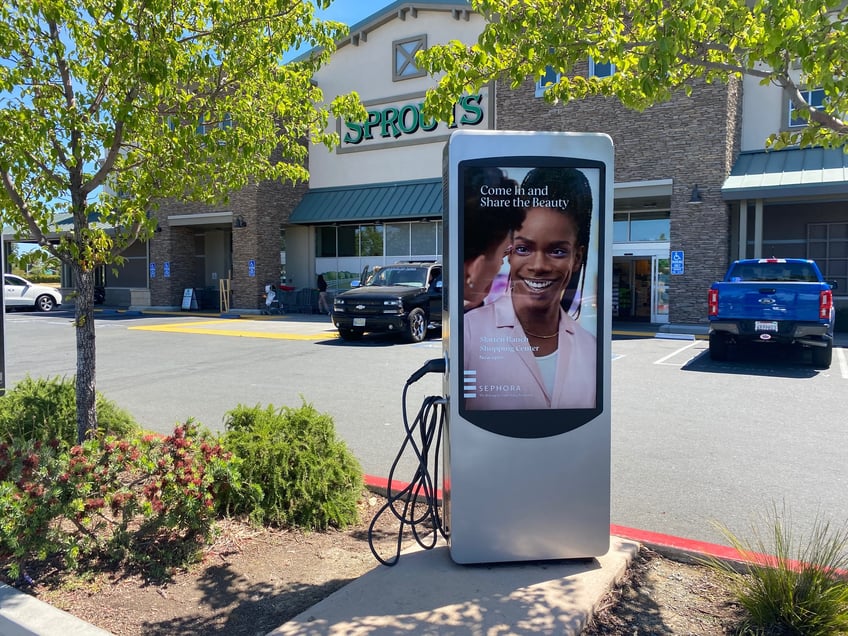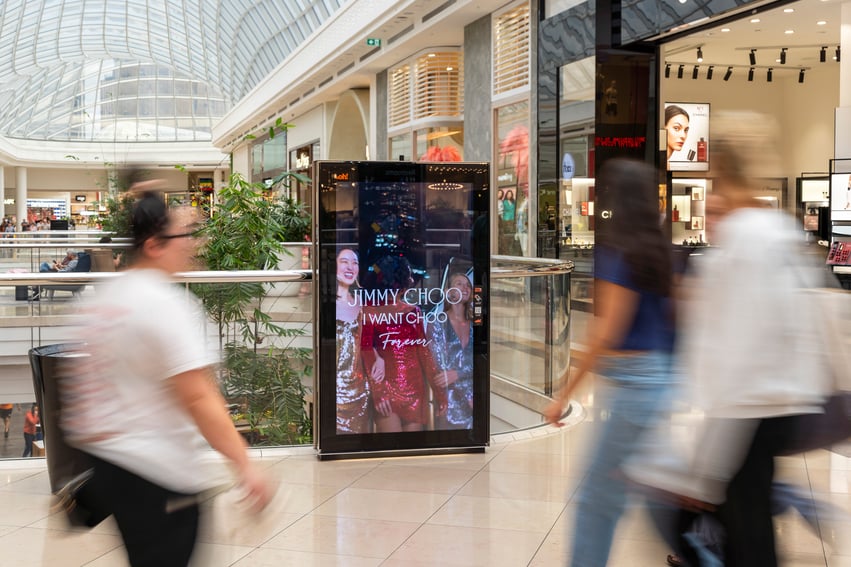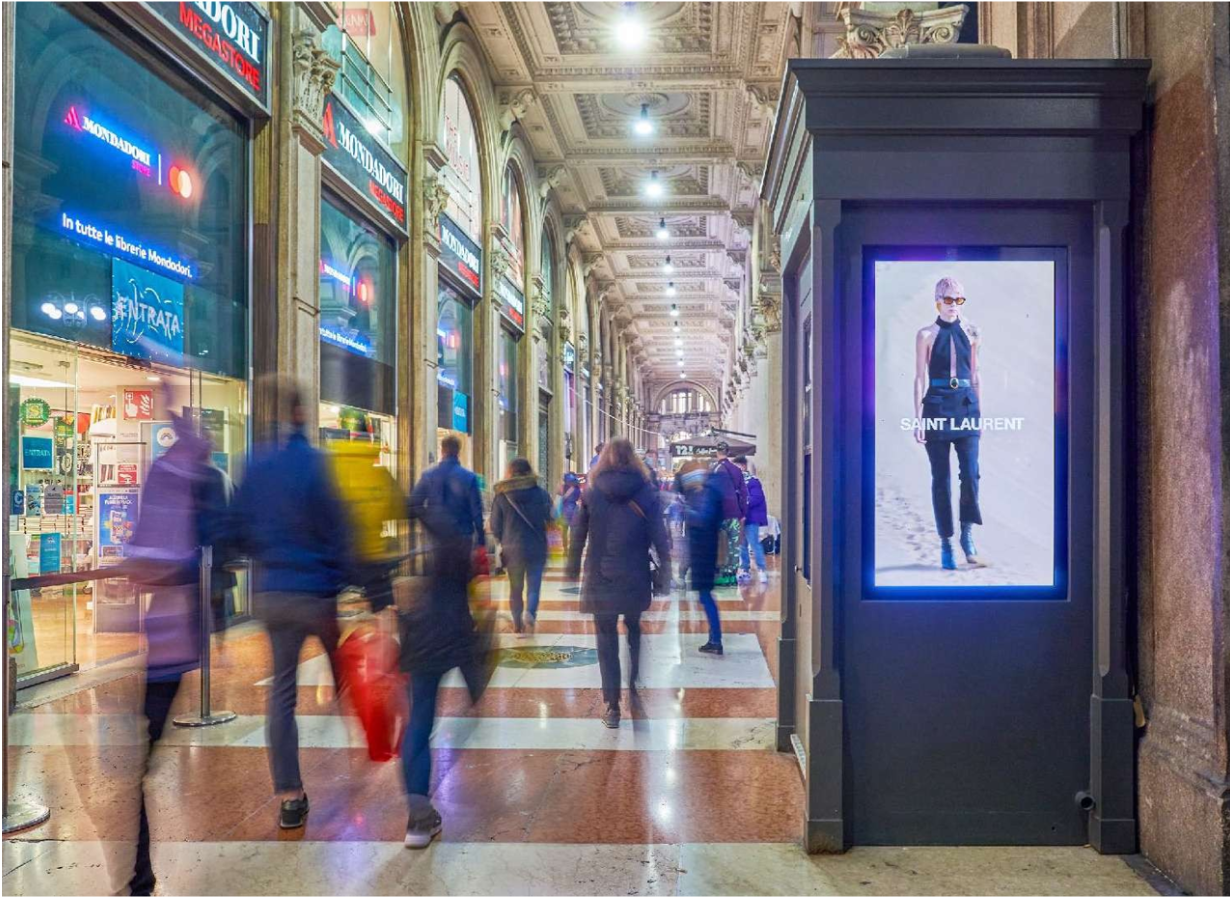Retail Media Networks have long been the bread and butter of many retail brands. They give advertisers high frequency and reach throughout supermarkets, convenience stores, and shopping malls. Consumer Products and Goods (CPG) brands often take advantage of shoppers' high dwell times to encourage buying their items.
But should brands that are not sold in these places consider it? What is the value of placing an ad in a grocery store if your product is not there? Solomon Partners says Retail Media Networks are a boon to digital signage. Seventy percent of advertisers report higher returns from Retail Media Networks than other ad channels. Eighty-nine percent of brands say they are highly satisfied with their Retail Media Network campaigns.
In this article, you'll learn all the benefits of Retail Media Networks. You'll discover options for advertisers who don't usually use this form of place-based advertising.

What is a Retail Media Network?
Retail Media Networks are advertising networks that operate in retail environments. This includes supermarkets, convenience stores, and other retail locations. Advertising displays or screens reach and engage consumers while they are shopping.
Capture shoppers' attention through digital screens, kiosks, and in-store displays. They reach audiences while they are buying products and can influence buying decisions at the point of sale. They can also capture people's attention for important information. Local governments may use them for Public Safety Announcements (PSAs).
Retail Media Networks leverage technology and data to deliver targeted and relevant advertising. Retail Media Networks allow brands to target specific consumer segments. Advertisers can reach their desired audience more effectively and measure their campaign's impact on consumer engagement and sales.
What Retail Media Network Formats Are Available?
Retail Media Networks have a variety of formats. Here are some of the most common:
- Digital Screens: High-resolution digital displays can show dynamic content, videos, and animations. These screens can be standalone, video walls, or interactive touchscreens.
- Kiosks: Interactive Kiosks often feature touchscreens, product catalogs, and payment options. Consumers use them to look for products, access information, or make purchases.
- Shelf Edge Displays: These are positioned at the edge of store shelves. Shelf Edge Displays show product information, promotions, or pricing details.
- In-Store Audio: Retail Media Networks sometimes have audio-based advertisements played through store speakers. These ads can provide information, promote products, or improve the shopping experience.
- Mobile Integration: Mobile devices and apps can deliver personalized ads to shoppers' smartphones.
- Point-of-Sale (POS) Displays: These displays are usually near checkout counters. POS Displays can include advertisements, promotions, or upsell opportunities. Advertisers use POS Displays to influence buying decisions at the final stage of the shopper's trip.
- Interactive Experiences: Entertain shoppers and create memorable brand interactions. Examples include augmented reality (AR) or virtual reality (VR) experiences, gamification elements, or interactive installations.
Use one or more formats to create engaging and immersive store experiences.
What are the Benefits of Retail Media Networks for Non-CPG Brands?
Retail Media Networks are often associated with Consumer Packaged Goods (CPG) brands. But, non-CPG brands can also benefit from using these networks in their advertising. Here's why non-CPG brands should consider using Retail Media Networks:
- Targeted Audience: Advertisers can reach a targeted audience of shoppers. Shoppers are often seeking products or are open to discovering new offerings. Non-CPG brands can connect with shoppers and immediately present their products or services.
- Point-of-Sale Influence: Ads near the point of sale influence buying decisions. Non-CPG brands can advertise close to where final buying decisions are made.
- Increased Brand Exposure: Brands can leverage ad units within high-traffic retail locations. These networks capture shoppers' attention, increasing visibility and exposure. Non-CPG brands can improve brand recognition and recall.
- High-Frequency: Shoppers routinely visit supermarkets and other shopping locations. This allows them to interact with a brand regularly. Non-CPG brands can increase brand awareness, recognition, and recall.
- High Dwell Times: Shoppers are often in a store browsing for some time. They search for products on their list and compare products. Consumers have more time to interact with the advertising than some other formats.
- Contextual Relevance: Non-CPG brands can personalize ads. They can tailor content to specific demographics, interests, or buying history. This makes their campaigns more engaging, effective, and relevant to their audiences.
- Measurable Impact: Retail Media Networks often provide robust data analytics and measurement capabilities. This helps advertisers make data-driven decisions for future marketing efforts.
- Flexibility and Dynamic Content: Brands can update and change their ads in real-time. This allows for timely promotions, dynamic creative elements, or personalized messaging. Target an audience based on specific factors. Options include targeting store locations or times of the day. Update ads as needed to stay relevant and top of mind.
- Integration with Omnichannel Strategies: Retail Media Networks integrate well with omnichannel marketing strategies. Non-CPG brands can create a consistent and cohesive brand experience. They can drive consumers from physical stores to online channels where they can buy products.
- Cross-Promotion Opportunities: Retail Media Networks often collaborate with brands and retailers. Non-CPG brands can leverage cross-promotions with complementary brands to reach a wider audience.
- Partnership Opportunities: Retail Media Networks often collaborate with retailers or shopping centers. Cooperative advertising efforts provide extra value and exposure for brands. Non-CPG brands can partner with other brands or retailers to create a cohesive and unified brand experience for consumers.
Retail Media Networks can be an excellent way for many brands to engage with a captive audience that is ready to buy products.

Successful Campaigns In-Store with Billups
Billups helps advertisers strategize, implement, and measure their outdoor campaigns. Our team will help you plan the best placements for your Retail Media Network campaign. Reach out today to get started.


